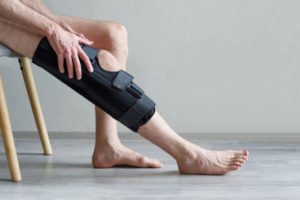
Stroke misdiagnosis is a critical issue in healthcare, posing significant risks to patients. When a stroke is incorrectly diagnosed or not diagnosed at all, patients miss the narrow window for effective treatment, potentially leading to severe, long-term disabilities or even death. A stroke occurs when the blood supply to part of the brain is interrupted or reduced, preventing brain tissue from getting oxygen and nutrients. Brain cells begin to die in minutes. There are two main types of stroke: ischemic, caused by blockages, and hemorrhagic, caused by bleeding.
The challenge in diagnosing strokes arises from their diverse presentation of symptoms, which can vary significantly among patients and mimic those of other medical conditions such as migraines, epilepsy, or hypoglycemia. Classic stroke symptoms include sudden numbness or weakness, especially on one side of the body; confusion; trouble speaking or understanding speech; vision problems; difficulty walking; dizziness; and sudden severe headache with no known cause. However, these symptoms can be fleeting or subtle, especially in the case of “mini-strokes” or transient ischemic attacks (TIAs), which further complicates accurate diagnosis.
Strategies to Improve Stroke Diagnosis
Enhancing the accuracy of stroke diagnosis involves multiple strategies, focusing on both healthcare provider education and patient awareness. Continuous training for emergency room staff, primary care physicians, and paramedics on recognizing stroke symptoms and employing rapid assessment protocols can significantly improve diagnostic accuracy. Implementing standardized stroke scales and screening tools in clinical settings helps in the objective assessment of symptoms, aiding in distinguishing strokes from other conditions with similar presentations.
The Role of Advanced Technology
Advancements in medical imaging technology play a crucial role in improving stroke diagnosis. Diffusion-weighted Magnetic Resonance Imaging (MRI) can detect ischemic strokes within minutes of onset, providing a clear advantage over traditional CT scans that may not show changes until several hours later. Telemedicine and mobile stroke units equipped with CT scanners allow for the immediate evaluation of stroke patients, especially in remote areas, facilitating faster decision-making regarding treatment.
Community Education on Stroke Awareness
Empowering the community with knowledge about stroke signs and the urgency of seeking immediate care is pivotal in improving stroke outcomes. Educational campaigns focused on the FAST acronym (Face drooping, Arm weakness, Speech difficulties, Time to call emergency services) have been instrumental in raising public awareness. By recognizing these signs, individuals can act swiftly, ensuring timely medical intervention and significantly improving the chances of recovery.
Legal Recourse for Stroke Misdiagnosis
For individuals who have suffered due to stroke misdiagnosis, legal recourse offers a pathway to compensation and justice. Navigating the legal landscape requires the expertise of attorneys specialized in medical malpractice related to stroke care. These legal professionals are equipped to assess the nuances of each case, advocate for the rights of stroke victims, and secure the compensation necessary to support their recovery and rehabilitation.
Understanding the multifaceted approach to improving stroke diagnosis and treatment underscores the importance of a coordinated effort between healthcare providers, patients, and the broader community. Through continued education, technological advancements, and a prompt response to the signs of stroke, we can significantly reduce the impact of this life-threatening condition.
Conclusion
The misdiagnosis of stroke remains a critical issue with potentially grave consequences. Through a combination of enhanced healthcare provider education, the utilization of advanced diagnostic technologies, and widespread public awareness initiatives, strides can be made toward improving the accuracy of stroke diagnosis. Early recognition and treatment are paramount in mitigating the long-term impacts of strokes, underscoring the need for concerted efforts across the healthcare spectrum to address this challenge effectively.







